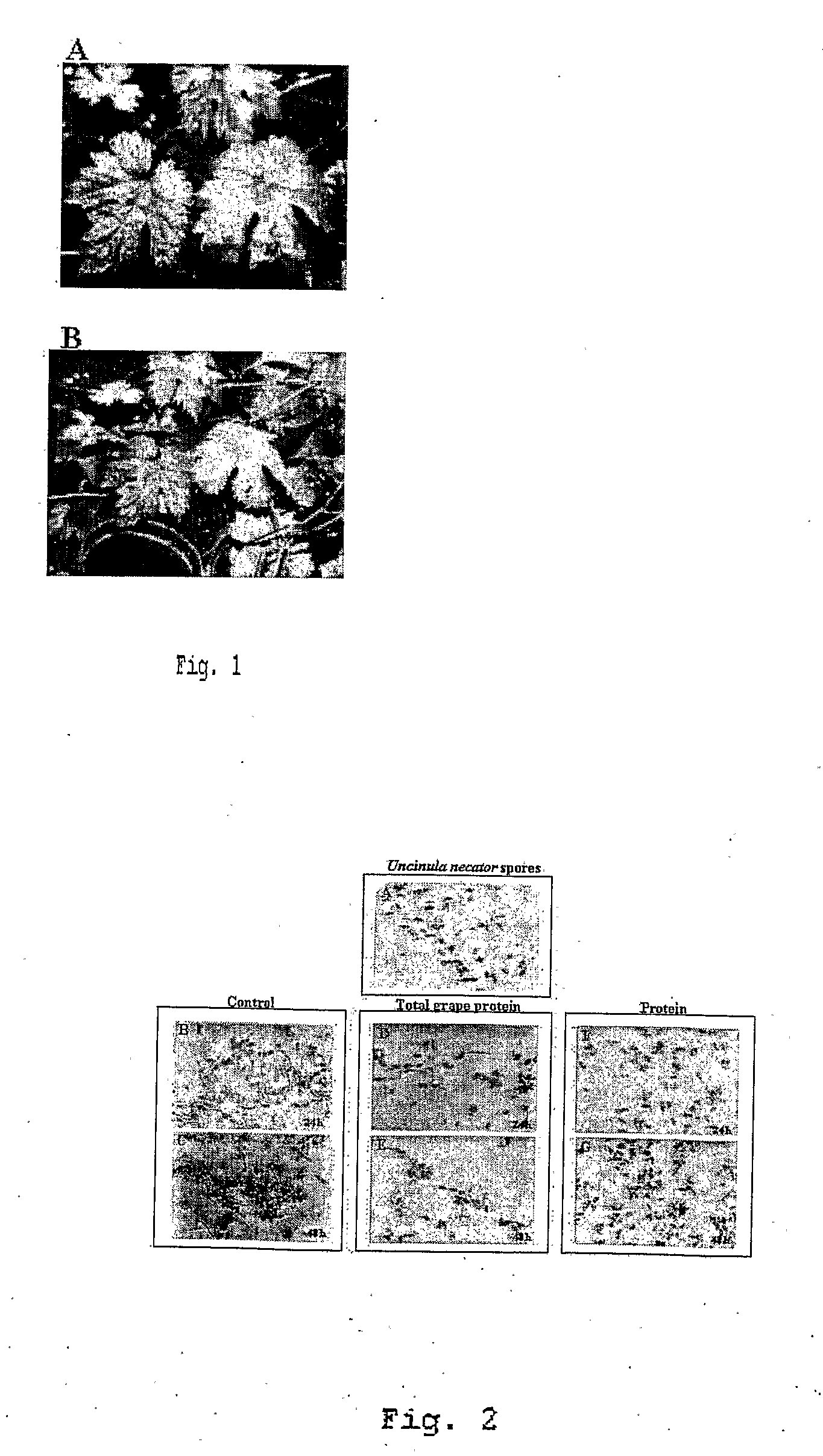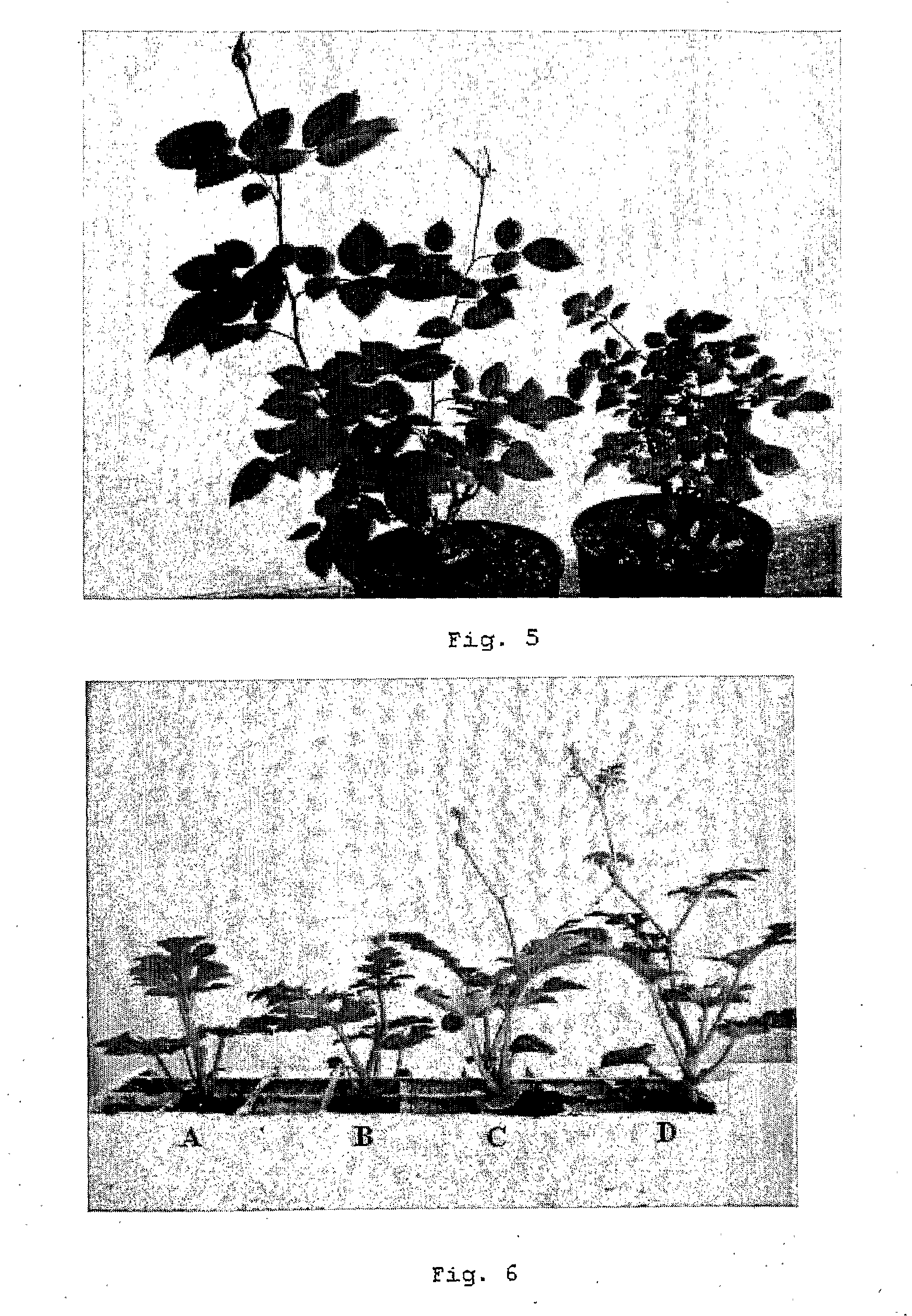Polypeptide Extracted from Plants of the Genus Lupinus or Produced in Recombinant Form, Nucleotide Sequence Encoding It and Its Use in animal Nutrition, as a Plant Growth Promoter and in the Fight Against Pathogenic Fungi
a polypeptide, plant genus lupinus technology, applied in the field of polypeptides, can solve the problems of high economic and environmental costs, serious problems in the control of pathogenic agents worldwide, and high cost of phytopharmaceutical products currently available in the mark
- Summary
- Abstract
- Description
- Claims
- Application Information
AI Technical Summary
Benefits of technology
Problems solved by technology
Method used
Image
Examples
examples 1 and 2
Effect of Spraying the Native Protein Containing the Polypeptide from Lupinus on the Surface of Grapevine Leaves Infected with the Fungus Uncinula necator
The Causal Agent of Powdery Mildew in Grapevine
[0051]The antifungal activity of the polypeptide from Lupinus was evaluated after spraying the surface of a grapevine leaf with a solution containing 200 μg of pure native protein containing the polypeptide / mL. As a control, a similar leaf was sprayed under identical conditions with water. The results obtained are presented in FIG. 1 and show that the grapevine leaf remains healthy two months after spraying the leaves with the native protein containing the polypeptide, without traces of the fungus presence, even though the sprayed leaves were always and permanently kept in close contact with heavily infected leaves.
[0052]Another trial was performed following an identical methodology, but the observations of the surfaces of the treated grapevine leaves were made using a metallurgic mi...
example 3
Effect of the Native Protein Containing the Polypeptide from Lupinus on the Germination and Development of spores from Uncinula necator
[0053]Spores from the fungus Uncinula necator were removed from the surface of infected grapevine leaves and inoculated in water agar 0.6% (w / v), containing 200 μg of pure native protein containing the polypeptide from Lupinus per mL, or 200 μg of the total protein fraction from mature grapes (containing PR proteins) per mL. Spore germination and development of the germ tubes were followed by optical microscopy using the contrast phase lens system, during 24 and 48 h. The results obtained, presented in FIG. 2, show that a marked reduction occurred in the presence of the medium containing the polypeptide from Lupinus, not only in the number of germinated spores, but also in the length of the germ tubes. This effect is notorious when compared with the result observed in the presence of the PR proteins.
example 4
Effect of the Native Protein Containing the Polypeptide from Lupinus on the Germination and Development of Spores from the Fungus Phomopsis viticola
The Causal Agent of Excoriosis in Grapevine
[0054]Spores from the fungus Phomopsis viticola were inoculated in PDA (potato dextrose agar) medium. After 15 minutes, the spores were removed and mixed with a solution containing the native protein containing the polypeptide from Lupinus in a final volume of 25 μL. These droplets were placed in Petri dishes and overlaid with glass slides which were subsequently sealed, creating a wet chamber. Spore development was followed by optical microscopy observations. A clear inhibition of spore germination was evident. After 24 h developing hyphae suffered lysis.
PUM
| Property | Measurement | Unit |
|---|---|---|
| Fraction | aaaaa | aaaaa |
| Electrical resistance | aaaaa | aaaaa |
| Nutritive value | aaaaa | aaaaa |
Abstract
Description
Claims
Application Information
 Login to View More
Login to View More - R&D
- Intellectual Property
- Life Sciences
- Materials
- Tech Scout
- Unparalleled Data Quality
- Higher Quality Content
- 60% Fewer Hallucinations
Browse by: Latest US Patents, China's latest patents, Technical Efficacy Thesaurus, Application Domain, Technology Topic, Popular Technical Reports.
© 2025 PatSnap. All rights reserved.Legal|Privacy policy|Modern Slavery Act Transparency Statement|Sitemap|About US| Contact US: help@patsnap.com



